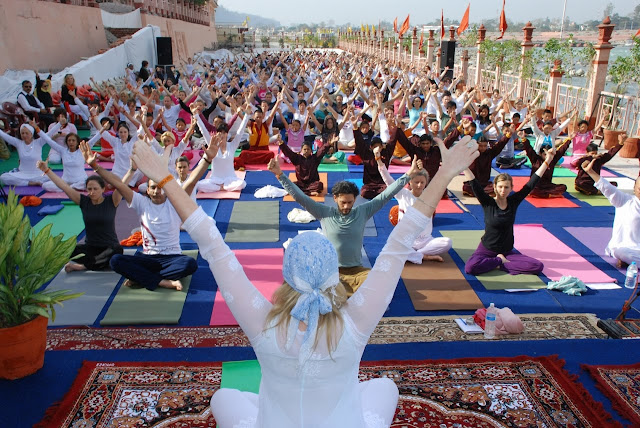SRINAGAR, JAMMU AND KASHMIR
Srinagar is the summer capital of the Indian state of Jammu and Kashmir and is often touted to be one of the top 5 hill stations in the country. It lies in the Kashmir Valley, on the banks of the Jhelum River, a tributary of the Indus.
It is the first stop for most travellers to Kashmir; and with its great lake and meandering river, its exquisite pleasure gardens and romantic shikara rides, the old-world charm of its houseboats and the ageless grace of its architecture, the city is a fitting introduction to the many enchantments of the valley.
The vast Dal lake is, of course, Srinagar’s emblematic feature, and its deep waters carry the most popular of Srinagar’s attractions: houseboats and shikaras. Many visitors are content to spend a great part of their holiday aboard these waterborne hotels, watching the lake’s traffic float by from cushioned balconies, venturing into the houseboat’s walnut-wood interiors for delicious, fragrant Kashmiri cuisine. If at all one can bring oneself to leave the boat, it is to step into another – the dainty, canopied shikaras. Fitted with generously cushioned seats and footrests, these elongated little boats constitute one of the great luxuries of the world, and have long been the very epitome of romance.
Shalimar, Nishat and Chashm-e-Shahi constitute the famous Mughal Gardens of Srinagar. They are known as much for their architectural exquisiteness as for the history that surrounds them. The Mughal Gardens is one of the splendid places in this city, glimpses into an earthly heaven of many-hued flowers, carpets of grass and playful fountains . Due its magnificent charm, the garden lures the attention of a number of travelers from different corners of the world and makes a visit to Srinagar. It was in the 17th century that Shalimar Bagh (garden) was built as a summer residence and royal court.
The numerous lakes and gardens of the city lend it its famous charm. Nagin Lake is an amazing place which is bounded by trees. Commonly, it is known as the 'Jewel in the Ring’ and is located at a distance of 6 km from Dal Lake in Srinagar. The tranquil atmosphere of the place offers a pleasant departure from the hustle bustle of the market. A travelers delight because it is away from heart of the city, no hassle and noise, its a pure and clean place. A small distance away from the Dal Lake, in Nagin Lake you can boat, swim and attempt water skiing.
Claimed to be the largest freshwater lake in India, the Wular lake can spread over nearly 200-sq-kms but its actual surface area tends to vary during the year. The Jhelum River flows into the lake, 40-km downstream from Srinagar, and then out again. The lake, calm though it may appear, is noted for the fierce winds that sometimes blow up. The deepest part of the lake is known as Mota Khon, since the bodies of people drowned in the lake were all supposed to be washed to this place.
The Hazratbal mosque is situated in Srinagar district, on the western banks of the picturesque Dal Lake. Facing the beautiful Nishat Bagh, the mosque offers a spectacular view of the lake and the mountain afar. This revered shrine houses the Moi-e-Muqqadus (preserved sacred hair) of Prophet Mohammad. Public display of the hair takes place only on religious occasions.
The Jama Masjid of Srinagar is situated at Nowhatta, in the middle of the old city. An important mosque in Srinagar, it was built by Sultan Sikandar in 1400 AD. The attractions of the Jama Masjid of Srinagar, Kashmir include beautiful Indo-Saracenic architecture, a magnificent courtyard and 370 wooden pillars. Another feature of the mosque is the peace and tranquility inside it, standing out against the hustle of the old bazaars around it. Thousands of Muslims assemble at the mosque every Friday to offer their prayers.
The markets of Srinagar offer a vast variety of the most refined crafts – from pashmina shawls, to intricately handwoven carpets, delicately carved woodwork and glittering copperware. Epicureans will delight in the rich Kashmir cuisine: from melt-in-the-mouth gushtabas to irresistible walnut tarts, or even a handful of warm, roasted chestnuts cracked open in the sun. For those who wish to squeeze a little more of Kashmir into their stay, Srinagar is within comfortable driving distance of several popular sites. Horse-riding though the meadows of Gulmarg, angling in the cold waters of the Lidder river at Pahalgam, the spellbinding beauty of Sonamarg and the architectural treasures of Pandrethan and Parihaspura, these can all be experienced as day-trips from Srinagar.
The city is served by many highways, including National Highway 1A and National Highway 1D. Srinagar Airport has regular domestic flights to Leh, Jammu Chandigarh and Delhi and occasional international flights. Srinagar is a station on the 119 km long Kashmir Valley that started in October 2009 and connects Baramulla to Srinagar, Anantnag and Qazigund. The railway track also connects to Banihal across the Pir Panjal mountains through a newly constructed 11 km long Banihal tunnel.
There are ample number and variety of accommodation options available for those desirous of staying over at Srinagar. The Tourist Rest Houses/Bunglows run by the Uttaranchal Tourism subsidiaries and good number of private hotels with Deluxe and Luxurious facilities with reasonable fare are available.
.png)






















































